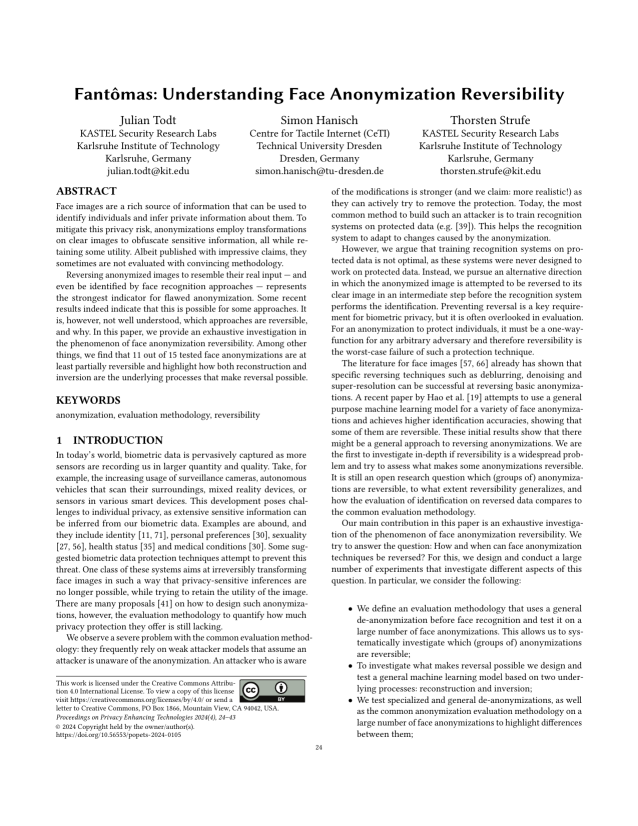Fantômas: Understanding Face Anonymization Reversibility
Authors: Julian Todt (Karlsruhe Institute of Technology), Simon Hanisch (Technical University Dresden), Thorsten Strufe (Karlsruhe Institute of Technology)
Volume: 2024
Issue: 4
Pages: 24–43
DOI: https://doi.org/10.56553/popets-2024-0105
Abstract: Face images are a rich source of information that can be used to identify individuals and infer private information about them. To mitigate this privacy risk, anonymizations employ transformations on clear images to obfuscate sensitive information, all while retaining some utility. Albeit published with impressive claims, they sometimes are not evaluated with convincing methodology.
Reversing anonymized images to resemble their real input --- and even be identified by face recognition approaches --- represents the strongest indicator for flawed anonymization. Some recent results indeed indicate that this is possible for some approaches. It is, however, not well understood, which approaches are reversible, and why. In this paper, we provide an exhaustive investigation in the phenomenon of face anonymization reversibility. Among other things, we find that 11 out of 15 tested face anonymizations are at least partially reversible and highlight how both reconstruction and inversion are the underlying processes that make reversal possible.
Keywords: anonymization, evaluation methodology, reversibility
Copyright in PoPETs articles are held by their authors. This article is published under a Creative Commons Attribution 4.0 license.

